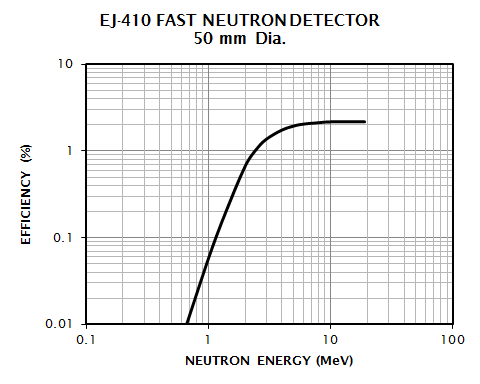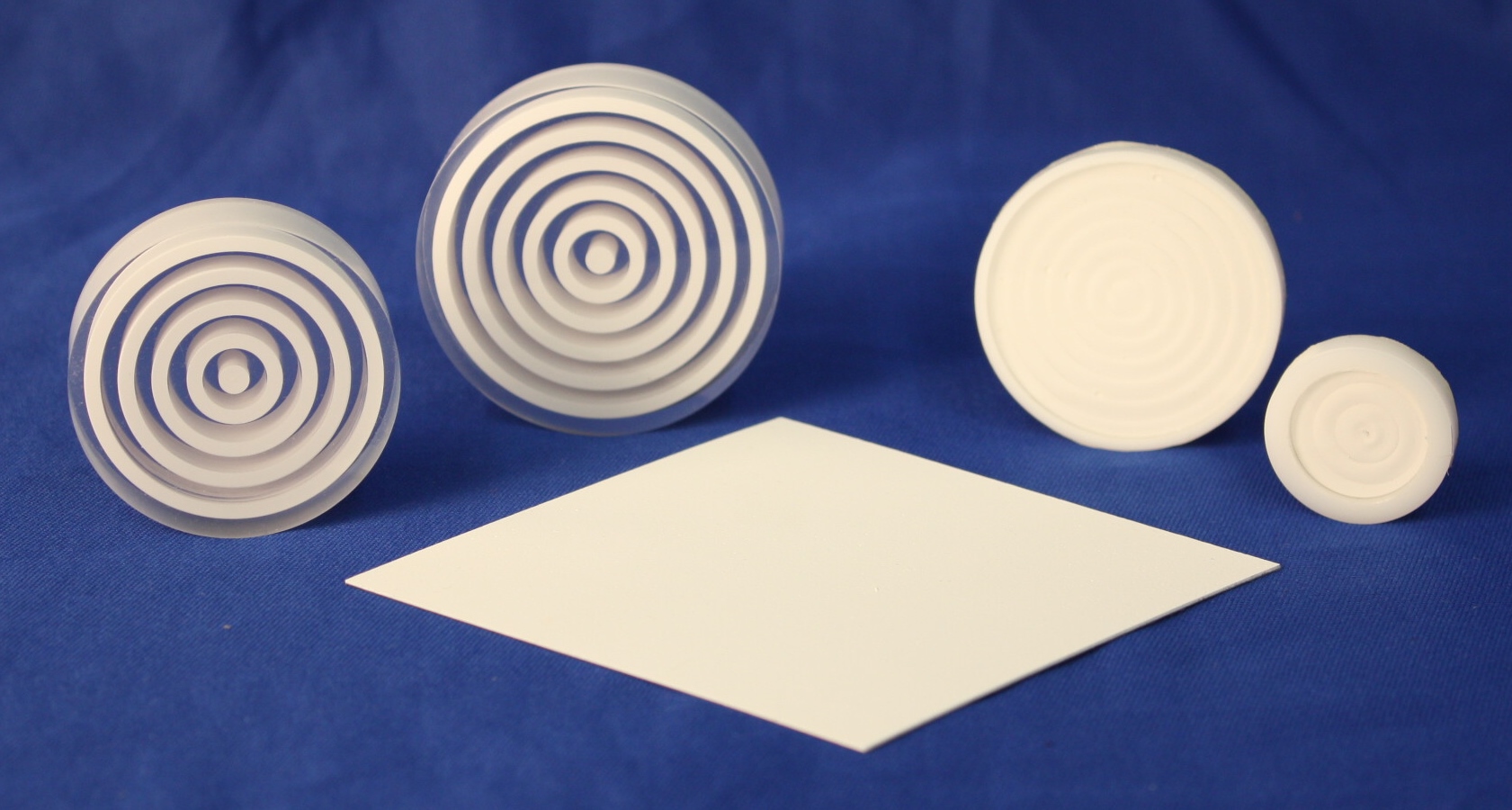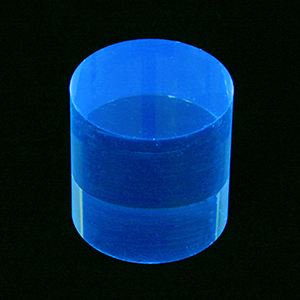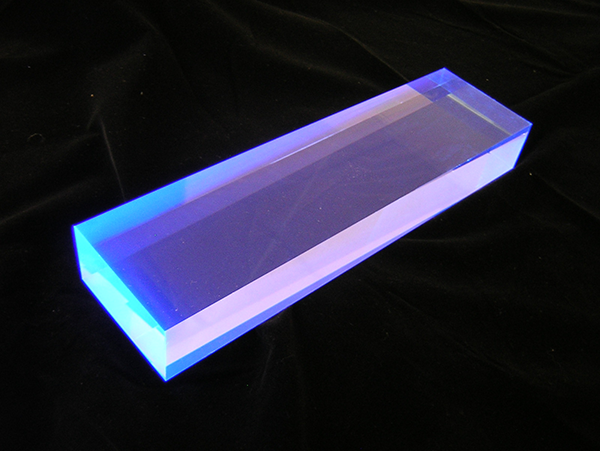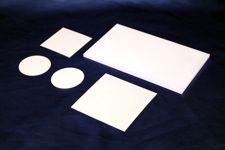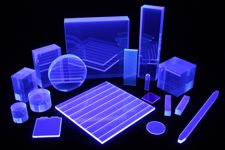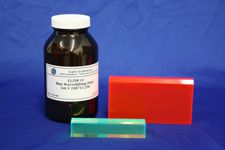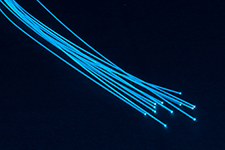THERMAL NEUTRON DETECTION
EJ-426
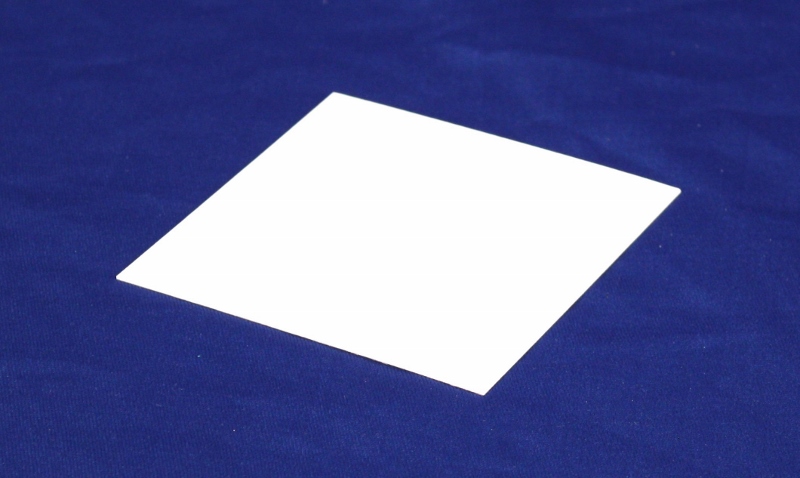
EJ-426 is an efficient detector for thermal neutrons with low sensitivity to gamma radiation. The detector has the form of a flat, white, thin sheet consisting of a homogeneous matrix of fine particles of lithium-6-fluoride (6LiF) and zinc sulfide phosphor (ZnS:Ag) compactly dispersed in a colorless binder. The lithium is enriched in 6Li to a minimum of 95 atom %.
The neutron detection process employs the nuclear reaction 6Li (n, α) 3H:
6Li + 1n → 3H + 4He + 4.78 MeV
with a cross section of 941 barns for 0.025 eV neutrons. The resulting triton and alpha particle are detected by ZnS:Ag phosphor with the broad blue fluorescent spectrum shown below. The decay time of the prompt scintillation component is 200 ns.
EJ-426 sheets can be manufactured in a large variety of sizes and formulas and are usually supplied with a support backing. Most types are heat formable. The tables below present the product variations currently available.
| DETECTION PROPERTIES |
EJ-426-0 |
EJ-426HD |
|
6LiF:ZnS Mass Ratio
|
1:3 |
1:2 |
|
6Li Density (atoms/cm3)
|
8.81 x 1021 |
1.07 x 1022 |
|
Theoretical NTH Efficiency
|
0.32 mm thick
|
0.21 |
0.25 |
| 0.5 mm thick |
0.31 |
0.36 |
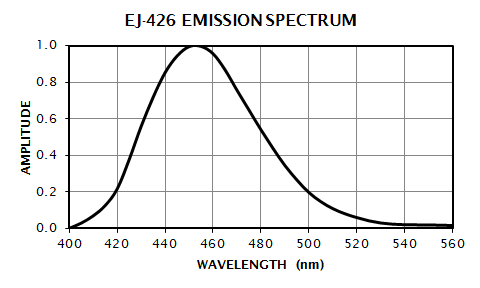
ORDERING INFORMATION
When requesting EJ-426, please specify the desired formula, matrix thickness, backing material, and sheet size. Standard options are listed in the table below. Custom formulations and variations are also available. The maximum sheet size is 400 mm x 500 mm.
|
EXAMPLE
Product Number: EJ-426-0-PE
Description: Phosphor matrix with 1:3 6LiF to ZnS mass ratio on 0.25 mm thick clear polyester sheet.
Sheet Size: 0.32 mm thick × 100 mm × 100 mm
|
| FORMULA |
| EJ-426-0 |
| EJ-426HD |
| THICKNESS |
| 0.32 mm |
| 0.50 mm |
| BACKING |
| Material Type |
Description |
Suffix
|
| Aluminum Foil |
50 µm thick foil |
(none) |
| Clear Polyester Sheet |
0.25 mm thick sheet |
-PE |
|
Laminated between two 0.25 mm thick sheets
|
-PE2 |
| Aluminized Mylar |
0.12 mm sheet |
-AM |
| Pure Aluminum |
0.5 mm plate |
-PA |
| High Reflective Aluminum |
0.4 mm plate |
-A |
THERMAL NEUTRON DETECTION
EJ-420
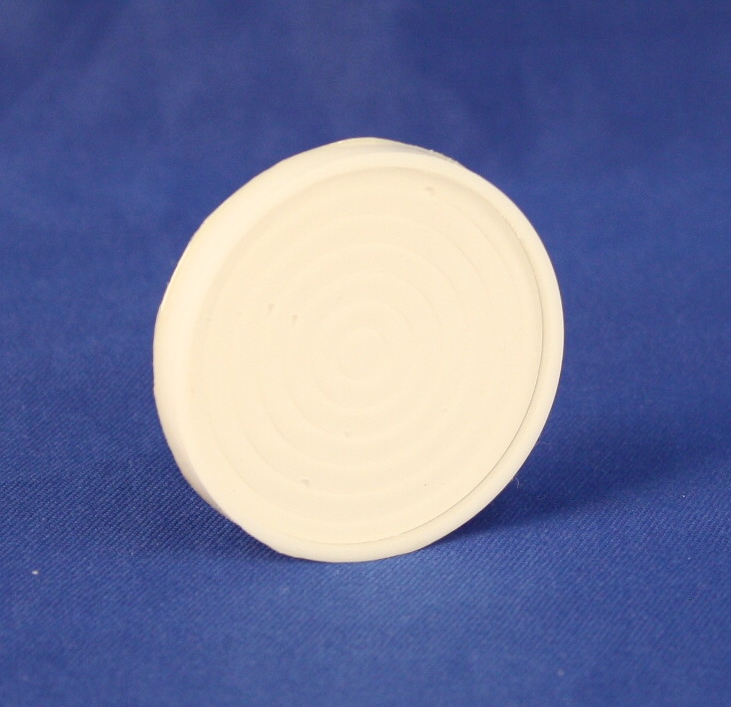
The EJ-420 detector is an efficient detector of thermal neutrons in the presence of gamma radiation. The detector employs a lithium compound, whose Li content is enriched to 95% 6Li dispersed in a ZnS:(Ag) matrix. Efficient measurements of thermal neutron fluxes may be performed in the presence of gamma radiation as high as 107 gamma rays per neutron.
In most applications, EJ-420 will give counting efficiencies up to 100% greater than those attainable with similar detectors based on 10B. The efficiency is dependent on the neutron energy and is approximately 30% for 0.1 eV neutrons and 60% for neutrons of energy 0.01 eV or less. The detection efficiency for thermal neutrons of about 0.025 eV is approximately 55%. The attainable detection efficiency in a particular application will, of course, also depend on the competing gamma ray background.
The detection process in EJ-420 depends on the nuclear reaction 6Li (n, α) 3H:
with a cross section of 941 barns for 0.025 eV neutrons. The resulting triton and alpha particle are efficiently detected in a ZnS:(Ag) phosphor especially selected for short decay time characteristics.
For typical applications EJ-420 is optically bonded to a photomultiplier tube with clear silicone grease or fluid. It may be surrounded by an appropriate quantity of hydrogenous material for neutron thermalization. The neutron flux is determined above a desired rejection ratio of gamma radiation or photomultiplier noise by setting the pulse height analyzer or discriminator of the associated electrical equipment to an appropriate level. This is adequate for most applications, but if the flux of gamma rays is very high, pulse shape discrimination may be effectively used.
| PROPERTIES |
EJ-420
|
6Li Content (mg/cm2)
|
9 |
Pulse Height (% NaI(Tl))
|
120 |
Wavelength of Maximum Emission (nm)
|
450 |
| Decay Time, Short Componenet (μs) |
0.2 |
EJ-420 50mm Disc

FAST NEUTRON DETECTION
EJ-410
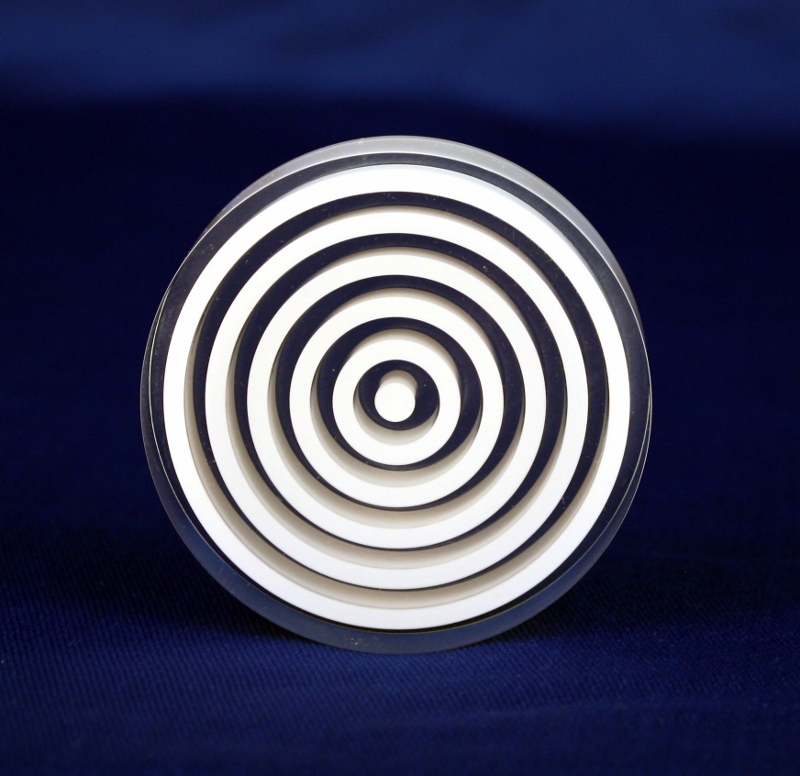
EJ-410 is specifically designed for detecting fast neutrons while being nearly insensitive to gamma radiation. The detector consists of zinc sulfide phosphor embedded in a hydrogenous polymer matrix structured in a series of concentric cylinders of clear plastic to facilitate light collection. Recoil protons generated in the detector produce scintillation pulses in the phosphor. Electrons scattered in the detector by gamma radiation interact very weakly with the ZnS:Ag particles, providing scintillation pulses easily eliminated from the counting systems by setting an appropriate threshold.
EJ-410 is an inert plastic disc which can be mounted to a photomultiplier tube either directly or by means of a suitable light guide. Optical greases, silicone rubbers or epoxies may be used with the EJ-410. A variety of blue-sensitive photomultiplier tubes may be used.
Gamma Discrimination
Gamma scintillation pulses are usually smaller than those generated by neutrons. In gamma fields below 1 R/hr, pulse height discrimination can easily be used to reject the gamma pulses. However, the randomly generated recoil protons will generate a broad scintillation pulse height spectrum. Therefore, in high gamma fields, the simultaneous detection of multiple gammas can generate pulse heights large enough to be in the normal neutron spectrum. The consequent higher discriminator settings needed will then reduce the neutron detection efficiency. Additional gamma rejection may be achieved by using time constants of a few microseconds.
| PROPERTIES |
EJ-410
|
Wavelength of Maximum Emission (nm)
|
450 |
| Decay Time, Short Component (μs) |
0.2 |
| Maximum Operating Temperature (°C) |
90 |
